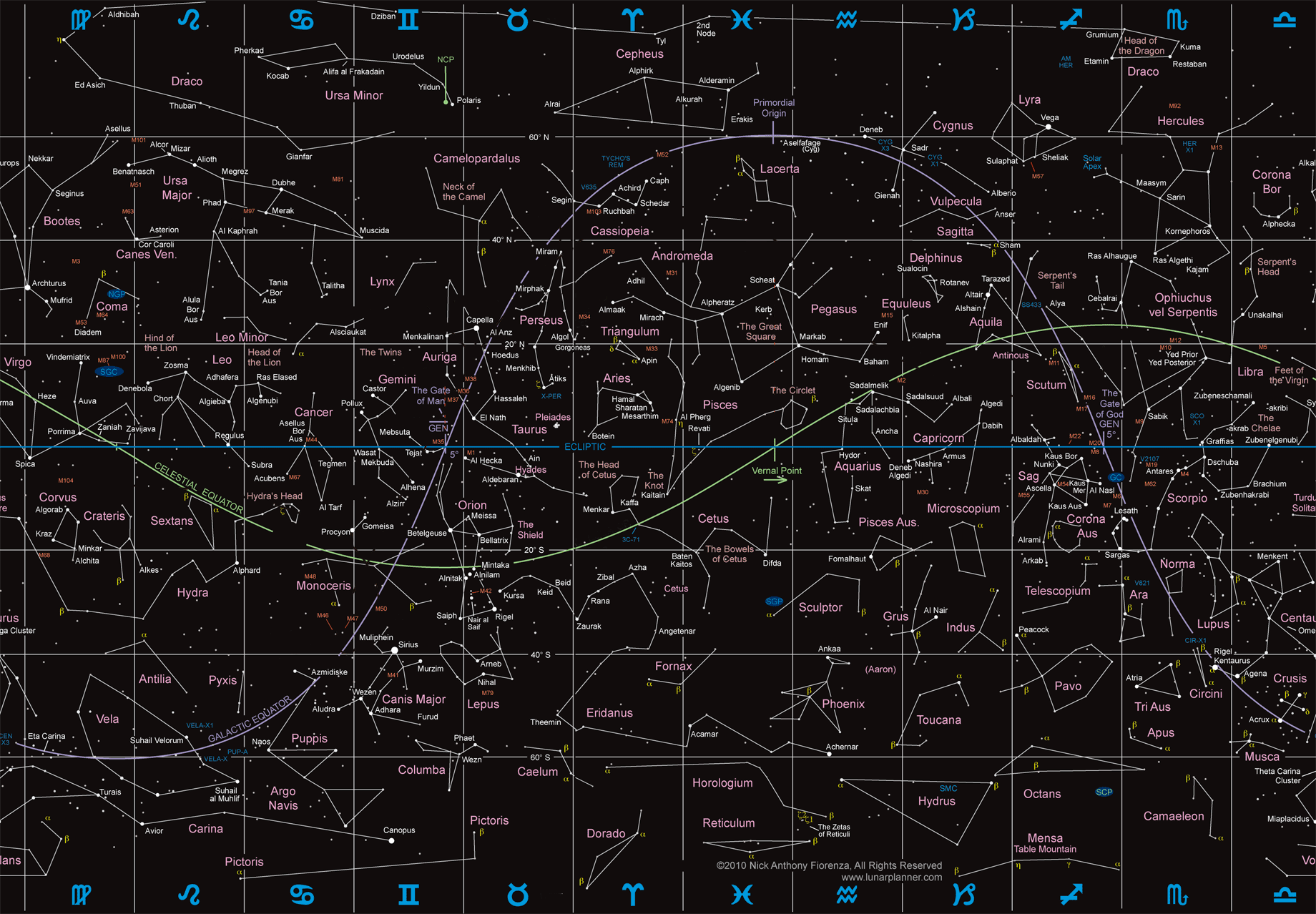

Few heard the thud when it was chopped down 75 years later by French star mapper Nicolas Louis de Lacaille.

Perhaps this was his motivation for creating the short-lived Robur Carolinum (Charles's Oak) in 1769, naming the figure for the British King, Charles II. Others, like Edmond Halley of comet fame, used the opportunity for political favor and advantage. It's another another example of politics at play in the heavens. The other forgotten constellation in the vicinity is the Branderburg Scepter, introduced in 1688 by German astronomer Gottfried Kirch and named for the Brandenburg province of Prussia ruled by Frederick III. Sidney Hall / Urania's Mirror You can find George's Harp, a scanty figure of 4th- and 5th-magnitude stars, tucked between Cetus and Eridanus. The name was later changed by Johann Bode to Harpa Georgium in his 1801 celestial atlas Uranographia. Originally called Psalterium Georgium, it was intended to honor George III of Great Britain who was the patron of William Herschel. George's Harp, another constellation no longer in use, was created by Maximilian Hell, director of the Vienna Observatory in the mid-1700s.

#Virgo constellation skychart free#
Given a free hand in today's world, I'm certain Computatrum Novum and Telephonium Portabile would be part of our celestial scenery.

Both groups are composed of mostly 5th-magnitude stars, though Musca's brightest, present-day 41 Ari, shines at magnitude +3.6.Īstronomers continued to use ancient myths as the basis for the new star patterns but also added additional, more modern, references, many of which related to then-current technology, such as: Machina Electrica, the Electrical Machine Globus Aerostaticus, the Hot-Air Balloon and Officina Typographica, the Printing Shop. Johannes Hevelius You can still find Hevelius's two additions to the fall–winter sky - Musca, the Northern Fly, and Triangulum Minus, the Small Triangle, near the non-defunct Triangulum. Use the map below to find them on March evenings. In his atlas Firmentum Sobiescianum (1690), Polish astronomer Johannes Hevelius introduced two small, obscure constellations that later fell by the wayside: Musca Borealis, the Northern Fly and Triangulum Minus, the Small Triangle. Because now-obsolete constellations occupied relatively blank spots in the sky, they were comprised of mostly fainter stars, as the bright ones had already been used for the more familiar constellations. Seeing and finding patterns is one of humanity's greatest traits, so it was only natural to look for new ways to connect stars in parts of the sky that were still wild territory between existing groups. The carcasses of constellations that might have been were discarded along the way, but not before these "might have beens" had their day, starring in a handful of old-time sky atlases during the acme of celestial cartography in the 17th and 18th centuries. Those 88 survived a lengthy winnowing process that ended in 1930 when their borders were set for good by the International Astronomical Union. For now, we've got 88, and that's the way it'll be for a long, long time. I suppose all constellations will be obsolete someday, replaced by revisionists of the distant future or simply so distorted by the motions of their individual stars that retooling will be essential. Created by 19th-century English amateur astronomer William Jamieson, Noctua perched at the end of Hydra's tail between Libra and Spica (top) in Virgo. Noctua, the Owl, now defunct, evolved from an earlier obsolete avian constellation.
#Virgo constellation skychart how to#
We revisit their brief glories and learn how to find them in the 21st-century sky. Obsolete constellations may be gone, but they're not forgotten.


 0 kommentar(er)
0 kommentar(er)
